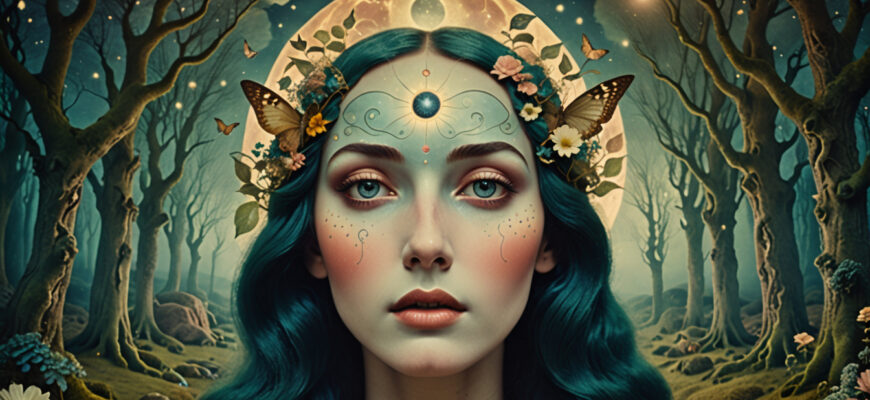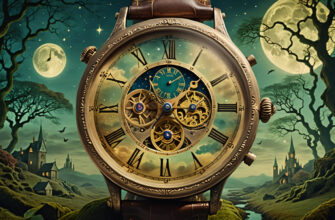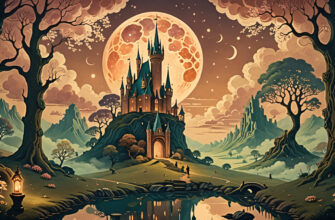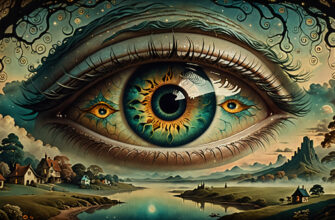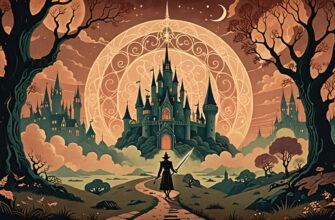Have you ever woken up from a dream that featured a face you couldn’t quite place, or perhaps your own reflection felt strangely different? Dreams about faces tap into really deep questions about who we are, how we want to show up in the world, and the masks we might wear. Faces aren’t just visual snapshots—they carry weighty emotions and stories about identity, connection, and sometimes fear or longing. Whether it’s the clear gaze of a familiar person or the eerie blankness of a faceless figure, these dreams hold keys to self-perception and our place in the social fabric. They invite us to listen closely to what’s bubbling beneath the surface—the hidden shame, the yearning to belong, or the vulnerability of being misunderstood.
Understanding Dreams About Faces
Faces in dreams often symbolize much more than physical features; they reflect the core of personal identity and how we connect with others. Encountering your own face might feel like staring down a question of self-image—who are you, really, beneath the cultural costumes and everyday roles? A sharp, clear reflection could signal moments of self-recognition or acceptance, while a blurred or shifting image might point to uncertainty or transformation brewing inside.
There are common threads when it comes to face dreams. Some people dream of gazing into mirrors, observing familiar faces from family or friends, or confronting faceless figures whose features are blank or obscured. Each variation carries different emotional tones:
- Reflections often relate to self-awareness, but shifts in the image may reveal anxieties or identity doubts.
- Familiar faces bring up unresolved feelings or relationships—love, conflict, or longing to reconnect.
- Faceless figures embody anonymity, fear of invisibility, or feeling disconnected from oneself or communities.
This dynamic plays out as a kind of mirror not only to how we see ourselves but to our experience of otherness—our perceived “fit” or distance from others. When a dream centers on faces, it draws attention to emotional undercurrents like shame triggered by feeling “different,” longing to be truly known, vulnerability in revealing the inner self, or fears about being misread or rejected.
Psychological Perspectives on Face Dreams
From a psychological lens, the face is the stage where identity and social roles meet. Carl Jung coined the term “persona” for the social mask we wear, which often shows up in dreams through faces and expressions. When the face in a dream feels like a mask, it prompts questions about authenticity: what parts of ourselves do we hide to feel safer or gain approval?
Dreams offer a private space to explore these internalized masks, inviting us to witness vulnerabilities not always visible in waking life. Sometimes, distorted or frightening faces reveal hidden wounds or shame that we usually tuck away—shadow aspects of the psyche calling for attention.
Emotions tied to face dreams often run deep:
- Shame can appear as a distorted, veiled, or faceless figure, hinting at parts of ourselves we struggle to accept.
- Longing emerges through the presence of familiar faces or yearning to be seen without judgment.
- Vulnerability is exposed when masks slip, revealing insecurities or fears of being misunderstood.
These dreams can also uncover a desire for connection and belonging, reminding us of the social bonds we crave, whether with family, friends, or chosen communities. From a trauma-informed viewpoint, some face-related dreams signal past hurts—betrayal, rejection, or invisibility—still echoing beneath the surface. Recognizing this invites compassion and healing, supporting a more gentle reckoning with identity and relationships.
Spiritual and Symbolic Meanings of Faces in Dreams
Spiritually, a face in a dream can act like a mirror to the soul’s current state. The emotions, clarity, or obscurity in that face often reflect inner shifts—whether peace, turmoil, or transformation. Faceless figures, in particular, carry powerful symbolism around mystery and the unknown. They evoke the uncanny feeling of anonymity or parts of ourselves that remain hidden or unclaimed.
In spiritual teachings, the face also represents a mask, inviting reflection on authenticity and presence. How often do daily life’s expectations shape the “faces” we show, and what could it mean if those illusions drop away in dream space?
| Dream Symbol | Spiritual Meaning | Emotional Energy |
|---|---|---|
| Clear, serene face | Soul alignment, self-acceptance | Calm, peace |
| Faceless figure | Unknowable mysteries, hidden identity | Anxiety, curiosity |
| Masked face | Lessons in authenticity, vulnerability | Conflicted, guarded |
| Distorted or haunted face | Exploring shadow self, inner turmoil | Fear, shame |
Viewing these dreams as a kind of cosmic weather report helps tune in to evolving feelings and shifts within. Are you easing into more presence, or grappling with layers of fear or longing? Every face tells its own story as part of the inner terrain you’re navigating—and the dream space invites a reckoning with truth, vulnerability, and the deeper currents that move you.
Cultural and Intersectional Layers of Face Dreams
Dreaming of faces can trigger questions about belonging, recognition, and identity in ways that are deeply rooted in cultural background. In some cultures, “saving face” carries immense weight—where reputation and how others perceive you shape daily interactions. Face dreams in these contexts often spotlight concerns with respect, social standing, or the collective’s values on honor. For example, a clearly seen face might bring comfort or validation, while a blurred or veiled face can evoke fears about losing social position or being misunderstood.
When approaching face dreams through an intersectional lens, queer, feminist, and trauma-aware perspectives step in to complicate what faces might mean. For queer dreamers, faces might represent masks imposed by heteronormative expectations or the yearning to be authentically seen beyond gender binaries. Feminist interpretations often highlight how faces in dreams reflect struggles against patriarchal gaze or societal pressure to conform to narrow beauty ideals. Trauma-informed views recognize that those with histories of shame or abuse might see distorted or faceless figures as symbolic of invisibility, suppressed parts of self, or unresolved pain.
Power dynamics also weave through facial imagery encountered in dreams. When a face in a dream projects authority—stern bosses, dominant family members, or oppressive figures—it reveals the imprint of societal hierarchies and internalized control. Conversely, dreaming of faceless crowds can symbolize both anonymity and erasure, capturing the tension between visibility and invisibility that marginalized identities often navigate.
Marginalized people frequently experience face dreams differently, shaped by external erasure or hypervisibility. Faces might appear fragmented, masked, or unknown, reflecting complex feelings around identity, acceptance, and vulnerability. For instance, a trans person’s dream might wrestle with the gap between their internal self and how their face is read by the world. A Black or Indigenous dreamer may confront faces of cultural trauma alongside ones offering ancestral connection and resilience. These layers show that face dreams aren’t just personal; they are cultural stories lived and dreamed through the body and spirit.
Reflective Practices: Engaging with Face Dreams for Healing
What feelings linger after a face shows up in your dreams? Is it a comforting smile, a gaze full of judgment, or a blurry figure just beyond reach? Starting with self-inquiry helps unlock the dream’s messages. Consider:
- Who is this face, and what do they bring up in you—fear, longing, shame, connection?
- What parts of your identity do they reflect or conceal?
- Are you seeing a public mask or a vulnerable truth?
- How might this face relate to people or experiences in your waking life?
Journaling can create a sacred space for processing these visions. Some prompts to explore include:
- Describe the face in detail—its expression, features, what it might be trying to say without words.
- Write about the story behind this face. Is it familiar, unknown, or shifting?
- What emotions rise as you sit with this dream image? Shame, longing, acceptance, or fear?
- Imagine having a conversation with this face. What do you need to hear or express?
Dreams stir up a mix of emotions that often linger beneath the surface. Holding space for feelings like shame or fear without rushing to fix them invites healing. Practices like mindfulness or gentle rituals can help maintain presence with the vulnerability these dreams uncover. For example:
- Creating a small altar with objects representing your dream’s faces, lighting a candle to honor the feelings they evoke.
- Doing grounding breathwork when revisiting the dream to stay connected to your body and safety.
- Reciting affirmations that reclaim your worth and authenticity beyond any masks or judgments.
Allowing yourself to hold these dream faces tenderly, with curiosity instead of judgment, brings the possibility of transformation and deeper connection to yourself and others.
Astrology and Dreamwork: A Queer-Feminist Lens
Incorporating astrology into dreamwork invites a cosmic perspective on the faces that appear in sleep. Each planetary energy colors how identity and masks manifest in dreams. Venus might bring beauty, desire, and social faces we adopt in relationships, while Pluto can reveal shadowed, hidden sides or intense encounters with inner demons. Moon transits shape emotional landscapes where vulnerability or protective masks come to life.
Viewing these planetary patterns through a queer-feminist lens means honoring the fluidity and multiplicity of identity. No single face or mask represents the entire self—more often, the dream dances between many “selves” shaped by resistance and resilience. Astrology offers a unique tool to see your “cosmic weather report” and meet yourself with compassion, recognizing how your chart’s archetypes inform your face dreams and feelings of self-worth.
For example, a strong Saturn in the natal chart might bring themes of authority, discipline, or societal expectations that press heavily on how you present your face to the world. Meanwhile, Chiron’s placement could highlight the wound beneath the mask, inviting healing around rejection or shame. Noticing where dream symbols align with your natal chart archetypes can deepen the dialogue with your subconscious, helping you unearth the roots of your self-image.
Rather than seeking fixed meanings, this approach encourages embracing your unique story and struggles as part of your astrological landscape. Your face dreams, like the planets, shift and evolve—sometimes fiery and bold, other times quiet and concealed. Working with these symbols brings self-knowledge as a form of liberation, transforming the masks you wear into expressions of power and authentic presence. After all, you were born for this journey of reckoning and radiance.
